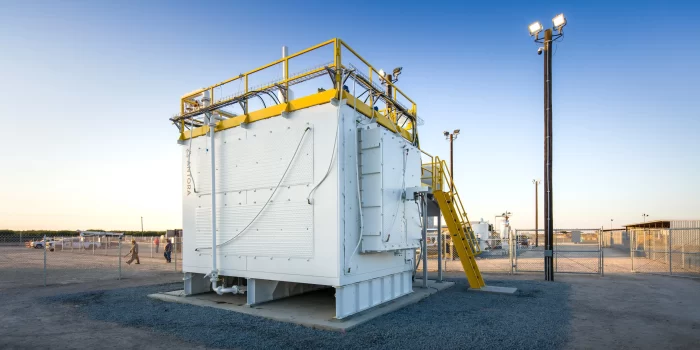With its state-of-the-art thermal battery technology, Fourth Power, an energy storage startup based in Massachusetts and supported by Bill Gates’s Breakthrough Energy Ventures fund, is poised to transform grid-level energy storage. In addition to being more than ten times less expensive than conventional lithium-ion batteries, the company asserts that their ultra-high-temperature “sun in a box” storage solution is also noticeably more powerful and efficient.
The primary objective of Fourth Power’s thermal battery is to compete with large lithium battery arrays in the short-duration 5-10 hour range. This makes it ideal for storing excess solar energy generated during the day for use in the evening and at night. However, what sets Fourth Power apart is its relevance in the 100-hour range, providing a solution for prolonged periods of adverse weather conditions and poor renewable generation.

The key component of Fourth Power’s technology is its creative heat-transfer medium—liquid tin metal. Within highly insulated storage facilities, liquid tin—which has a very low melting point of 232 °C (450 °F)—is transported via a plumbing system. The utilization of massive, reasonably priced graphite blocks that have been heated to an astounding 2,500 °C (4,530 °F) improves the system’s efficiency.
A key component of Fourth Power’s breakthrough is its pump, designed by founder Dr. Asegun Henry. The Guinness World Record-holding pump facilitates the movement of superheated liquid tin, even at temperatures close to “half the sun’s temperature.” This reliability at extreme temperatures allows the system to operate efficiently and avoid the pitfalls associated with metallic pumps.
The energy recovery process involves pumping the liquid tin through graphite pipes within power-harvesting cells. These cells, using thermophotovoltaic (TPV) technology, convert the intense light emitted by the white-hot pipes into electrical energy. The TPV cells, known for their high efficiency, contribute to the remarkable power density of Fourth Power’s thermal battery.

While Fourth Power acknowledges a lower round-trip energy efficiency compared to lithium batteries, around 50%, the cost advantage is substantial. With its reliance on abundant and inexpensive graphite and tin instead of refined lithium, Fourth Power claims its thermal battery can achieve the same results at less than $25 per kilowatt-hour of stored and returned energy, in stark contrast to the $330 estimated for lithium battery setups.
Safety is another crucial aspect of Fourth Power’s technology. Unlike lithium batteries prone to thermal runaway and explosion risks, the liquid tin in Fourth Power’s system freezes back into metal if it escapes the plumbing system, mitigating potential hazards.
With a recent $19-million Series A capital raise, Fourth Power aims to build a 1-megawatt-hour prototype facility near Boston, scheduled for completion in 2026. Despite potential challenges and competition, Fourth Power’s innovative approach to thermal energy storage positions it as a promising player in the evolving landscape of sustainable grid-level solutions.


